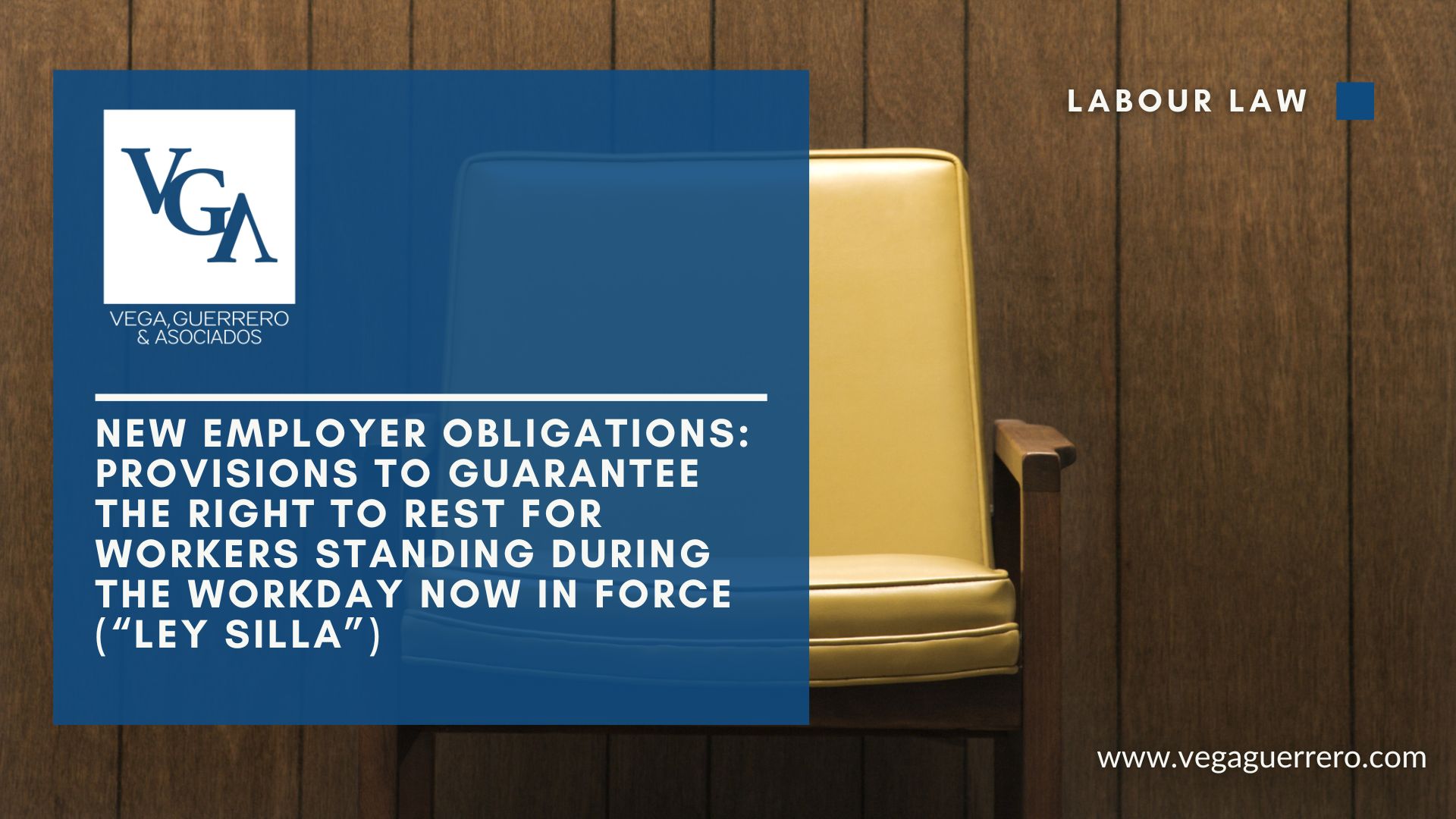On July 17, 2025, the Provisions issued by the Ministry of Labor and Social Welfare (STPS) came into effect, regulating the risk factors associated with standing work (bipedestation) in the services, commerce, analogous workplaces, and industrial sectors. This regulation stems from the December 2024 amendment to the Federal Labor Law, commonly known as the “Ley Silla,” which mandates employers to guarantee the right to rest during the workday for workers performing activities while standing.
What do these Provisions entail?
The regulation establishes a new standard in occupational health, safety, and ergonomics. Employers are now required to provide a sufficient number of seats or chairs with backrests for workers who perform their duties standing, either to carry out their tasks or to rest periodically.
Who does it apply to?
These obligations apply to all workplaces in Mexico where there are employees working on their feet in the following sectors:
- Services
- Trade
- Analogous workplaces
- Industrial establishments (when the nature of the work allows)
- All workers who perform their tasks standing for more than three continuous hours during their workday.
Key Employer Obligations
- Risk Diagnosis and Assessment
- Conduct an analysis to determine the risk level for each worker based on their posture, time spent standing, environmental conditions, physical workload, required attention level, and personal factors such as age, health, or pregnancy. Documentation of the tours and analyses must be generated through the Joint Health and Safety Commission.
- Include the analysis results in the workplace safety and health diagnosis and program or in the list of preventive and corrective actions, in accordance with NOM-030-STPS-2009.
- Determine each worker’s risk level to assign the appropriate type of chair with a backrest.
- Provision of Suitable Furniture
- Provide seats or chairs with backrests appropriate to the risk level, featuring lumbar support, adjustable height, footrests, and ergonomic design.
- Alternatively, designate specific rest areas when seating is not feasible at the workstation.
- Implementation of Additional Preventive Measures
- Alternate tasks to allow posture changes.
- Provide ergonomic footwear.
- Adapt floors with cushioned surfaces.
- Establish active break programs.
- Mark the areas where the chairs intended for rest are located.
- Training and Information
- Inform workers about the risks of prolonged standing and the preventive measures in place.
- Train workers on the proper use of seats or chairs with backrests.
- Medical Follow-up
- Refer workers for medical evaluation if signs of health impairment from prolonged standing are detected.
Key Employee Obligations
- Provide the information required by the employer based on the provisions.
- Use and care for the provided chairs and report any damage or issues.
- Undergo the corresponding evaluations and medical examinations.
What risks does the regulation seek to mitigate?
International and national studies confirm that prolonged standing at work leads to:
- Musculoskeletal disorders in limbs and spine
- Cardiovascular problems
- Lower back and leg pain
- Chronic fatigue and pregnancy complications
- Deterioration in quality of life and future employability
Legal and Operational Implications for Employers
This regulation impacts both the physical structure of workplaces and the organization of work shifts. Failure to comply may result in penalties imposed by the STPS under its inspection powers.
Furthermore, the STPS is authorized to monitor compliance and interpret any aspects not explicitly addressed, indicating a likely tightening of labor inspections in this area.
VGA Recommendations
At Vega, Guerrero & Asociados, we recommend that companies:
- Immediately conduct a comprehensive ergonomic assessment with the support of occupational health and safety specialists.
- Review and implement the mandatory measures, including furniture, preventive programs, and training.
- Update workplace health and safety programs, integrating this topic within the Workplace Health and Safety Commission.
- Thoroughly document each action to be prepared to demonstrate compliance during inspections or authority requests.
The entry into force of these Provisions marks a significant shift in Mexico’s occupational health and ergonomics culture, emphasizing the dignity of work and the protection of worker health.
Companies that adapt early will not only mitigate legal and financial risks but also enhance their productivity and workplace environment.
At Vega, Guerrero & Asociados, we are ready to assist you in fully complying with these new obligations. Contact us for a specialized assessment.




